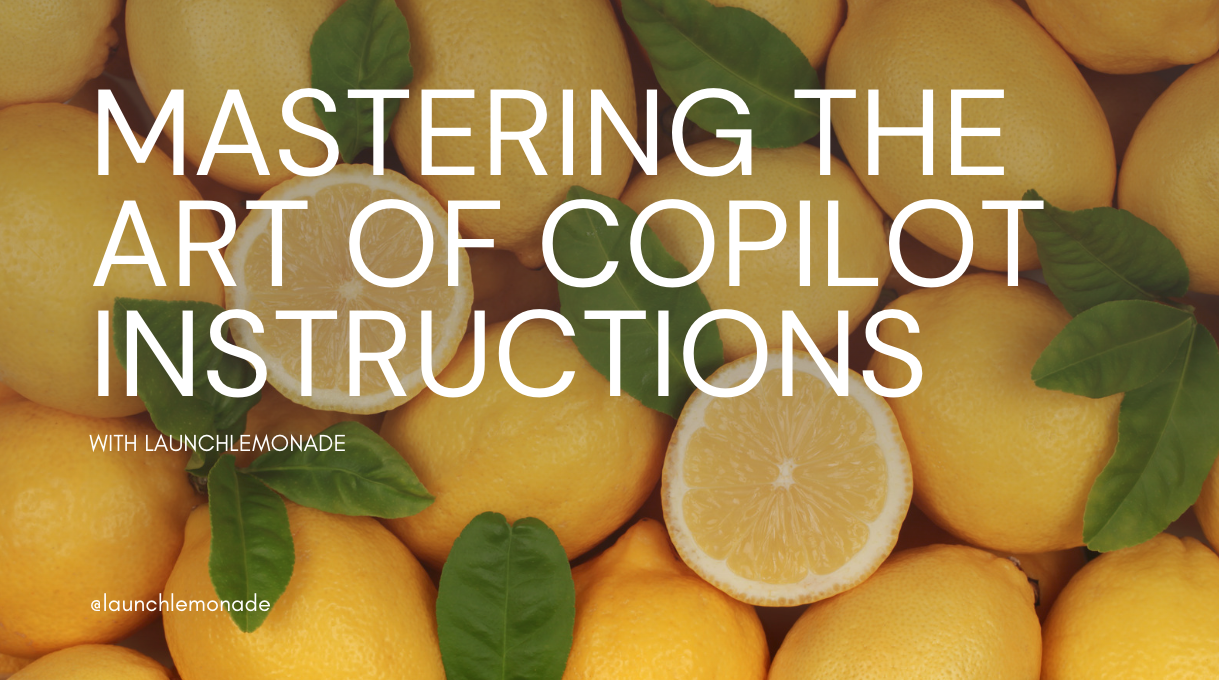[et_pb_section fb_built=”1″ theme_builder_area=”post_content” _builder_version=”4.27.0″ _module_preset=”default”][et_pb_row _builder_version=”4.27.0″ _module_preset=”default” theme_builder_area=”post_content”][et_pb_column _builder_version=”4.27.0″ _module_preset=”default” type=”4_4″ theme_builder_area=”post_content”][et_pb_text _builder_version=”4.27.0″ _module_preset=”default” theme_builder_area=”post_content” hover_enabled=”0″ sticky_enabled=”0″]
How to write effective copilot instructions to achieve your desired results.
In today’s content-driven world, AI copilots can be powerful tools for generating high-quality material. However, the effectiveness of your copilot hinges on the instructions you provide. Well-structured copilot instructions are the key to unlocking relevant, insightful, and creative responses from AI systems, making all the difference in achieving your desired outcome.
Defining the Copilot’s Role
The first step in crafting effective instructions is assigning a role to the AI copilot. This role serves as the foundation for how the AI should perform and respond.
- Example: “You are a content strategist specialising in AI for small businesses.”
Giving your copilot a clear role helps frame its expertise and tone, making its output more aligned with your expectations.
Setting Clear Objectives
After defining the role, the next step is setting clear objectives for the copilot. These objectives give direction to the AI’s tasks and ensure it works toward the desired outcomes.
- Example Objective: “Your objective is to generate a well-structured article that explores the impact of AI on small businesses in 2024.”
Assigning Tasks
Now, break down the instructions into specific tasks the copilot should complete. These tasks should be aligned with your objectives and designed to guide the AI step-by-step through the content creation process.
- Example Task: “Start by outlining key areas where AI is expected to impact small businesses, such as automation, customer service, and decision-making.”
Tasks provide clarity to the AI on how it should progress through the content, ensuring a structured response.
Defining Parameters
Finally, define any key parameters or guidelines that will shape the AI’s response, such as tone, length, or style.
- Example Parameters: “The article should be 1,200 words, written in a conversational tone, and include practical examples.”
These parameters ensure that the copilot’s output aligns with your specific needs and preferences, maintaining consistency and quality.
Testing and Refining Copilot Instructions
Once your copilot instructions are ready, it’s important to test them. Testing helps identify areas where the instructions might need refining to get the best results.
Here’s a step-by-step guide to testing:
- Initial Trial: Run the instructions with your copilot and review the first output. Look for any gaps in clarity, structure, or relevance.
- Identify Issues: Is the copilot sticking to the role? Are the tasks and parameters being followed? Identify where the instructions might need tweaking.
- Refine Instructions: Make small adjustments based on the trial, such as adding more context or adjusting the objectives or tasks.
- Repeat Testing: Test again after refinements, ensuring the copilot is generating high-quality content that meets your objectives.
- Finalise: Once satisfied, lock in your instructions for consistent performance from your AI copilot in future interactions.
How Different LLMs Handle Instructions
On platforms like LaunchLemonade, after selecting your preferred LLM, you’ll give your copilot these structured instructions. The AI will perform consistently based on your input each time you interact with it. However, performance can differ depending on the chosen LLM. For example, GPT-based models may generate longer, detailed responses, while smaller models like LLaMA may produce more concise outputs. It’s essential to test across different models to see which one works best for your specific needs.
Ready to improve your content creation process? Start refining your copilot instructions today on LaunchLemonade and experience how tailored AI responses can elevate your business.
[/et_pb_text][/et_pb_column][/et_pb_row][/et_pb_section]


